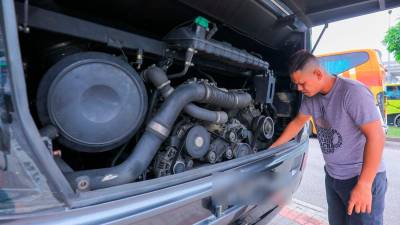PETALING JAYA: MY Mobility Vision CEO Wan Md Hazlin Agyl Wan Hassan said Budget 2026’s transport incentives may steer Malaysia toward safer and more sustainable mobility, but their success hinges on transparency, data accountability and consistent enforcement.
He said the plan to incentivise the installation of speed limiters in heavy vehicles could improve road safety if properly installed, tamper-proof and monitored, as it addresses two key crash causes, speed and fatigue.
He also welcomed continued fare caps and subsidies such as My50 for keeping public transport affordable and reducing congestion, but added that measures such as vehicle renewal grants and taxi tax relief must go beyond paperwork.
“The grant system must reward genuine safety improvements, not just compliance on paper,” he said, urging that incentives prioritise older, higher-risk vehicles.
He said without proper safeguards, some operators might install devices only to meet requirements, adding that tamper-proof limiters, random audits and verified data are therefore crucial to maintain integrity.
“Tax exemptions for taxi operators should be tied to regular inspections and driver training.”
He said stable funding for fare subsidies is vital to prevent maintenance lapses that could endanger passengers.
Wan Md Hazlin recommended making the speed limiter initiative data-driven, requiring certified installations, tamper-evident seals and regular telematics uploads to verify compliance, to ensure lasting results.
“Tax benefits should only be awarded after 12 to 24 months of verified data showing the device is working as intended.”
He also proposed that all vehicle renewal or scrappage incentives be conditional on verified deregistration of unsafe vehicles and replacement with safer models.
“No scrappage money until the old vehicle is deregistered and the new one meets safety and emissions standards.”
For the taxi sector, he suggested linking tax exemptions to successful Computerised Vehicle Inspection Centre checks and completion of refresher driving courses.
He further recommended Malaysia adopt a “Chain of Responsibility” model, similar to Australia’s, to hold not just drivers, but also fleet owners and cargo consignors accountable for unsafe practices.
To strengthen transparency, he proposed creating a National Road Safety Dashboard, published quarterly to track limiter installations, enforcement actions, blackspot improvements and crash trends.
“Transparency drives accountability and accountability drives real progress.”
While describing Budget 2026 as “a step in the right direction”, Wan Md Hazlin said the balance between incentives, regulation and enforcement still leans heavily on goodwill.
“Incentives alone will not change behaviour. They must be tied to consistent enforcement and transparent reporting.”
He urged the Road Transport Department and Malaysian Institute of Road Safety Research to focus enforcement and random depot checks on the top 10% to 15% of high-crash routes.
“For chronic speeding or tampering cases, penalties should escalate beyond drivers to fleet operators.”
He said Malaysia is finally investing in a safer, fairer transport system aligned with MY Mobility Vision’s data-led safety goals.
“Hopefully, we will see slower heavy vehicles, brighter roads and more affordable public transport.
“Real progress is not about how much we spend, but what we save; the lives, the minutes and the peace of mind on our roads.”
